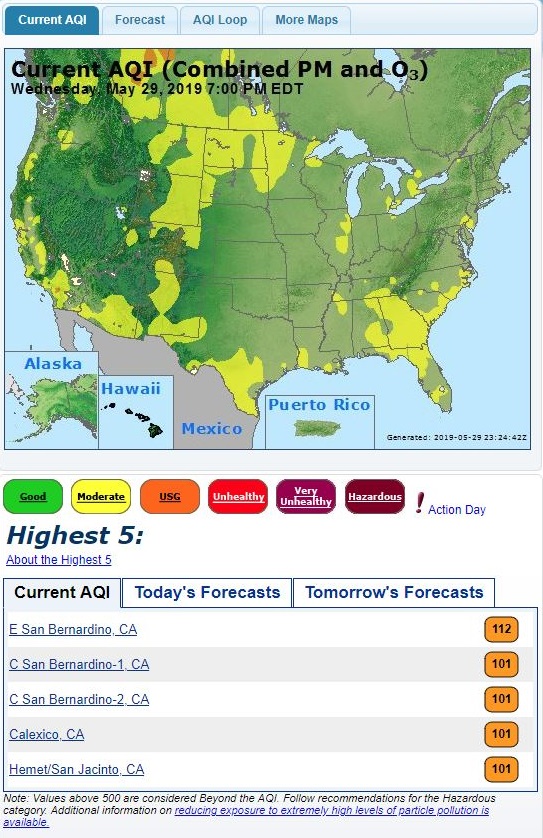The Air Outside Your Door – New Report Gives Letter Grades for Community Air Quality
by the American Lung Association Staff.
The air we breathe has a profound impact on our health – not just indoors but also outdoors. So how do we find out about the quality of the air we breathe outside our homes, and what can we do to protect ourselves? The American Lung Association just released a new report, “State of the Air” 2019, that helps answer those questions.
This is the 20th annual report from the Lung Association, and it uses official air quality monitors across the country to calculate letter grades for counties and rankings for cities for their levels of two of the most widespread types of harmful air pollution, ozone and particle pollution. You can look up your own community’s air quality by state or by ZIP code at www.lung.org/sota.
Over the two decades of this report, the overall trend has been one of great improvement in levels of these two pollutants across the country. Thanks to the federal Clean Air Act, the air is much cleaner than it used to be. However, we now know that climate change is starting to undo the nation’s progress.
This year’s report found that more than four in 10 Americans, or 43.3% of the population, live in counties with unhealthy levels of one or both types of pollution. The number of people exposed to unhealthy air increased from last year’s report. “State of the Air” 2019 also found that more cities had days with unhealthy levels of ozone and short-term particle pollution.

Above is a detail from the EPA’s AirNow site. “AQI” equals “air quality index.”
Climate change is fueling these worrisome findings. Ozone pollution forms when emissions from industry, vehicles, and other sources react in the presence of heat. More heat from a changing climate means more risk of unhealthy levels of ozone. And particle pollution can also come from industry and transportation but also wood burning and wildfires. Climate change is enhancing conditions for dangerous wildfires, and that’s leading to harmful wildfire smoke that puts health at risk far beyond the area of the fire itself.
Breathing ozone or particle pollution can cause asthma attacks, respiratory and cardiovascular harm, and even early death. Particle pollution can also cause lung cancer. While breathing air pollution is unhealthy for everyone, some communities are particularly at risk from air pollution – including children, older adults, people with pre-existing health conditions, low-income communities and some communities of color.
So, what can you do? First, keep an eye on your community’s air quality, especially if you fall into one of the at-risk categories above. The Environmental Protection Agency’s (EPA) official air quality website, www.airnow.gov, gives color-coded daily forecasts that you can use to make decisions about how much time to spend outdoors on any given day.
Second, join the chorus calling for the Administration and Congress to clean up air pollution and address climate change. Our elected officials must adopt science-based solutions to reduce emissions that are causing climate change and to ensure that no community near a polluting source gets left behind. Take action here.
The American Lung Association has led the fight for healthy lungs and healthy air since 1904. Today, the American Lung Association is focused on eliminating tobacco use and related lung disease, improving overall air quality for all, and reducing the burden of lung disease on patients and their families.
